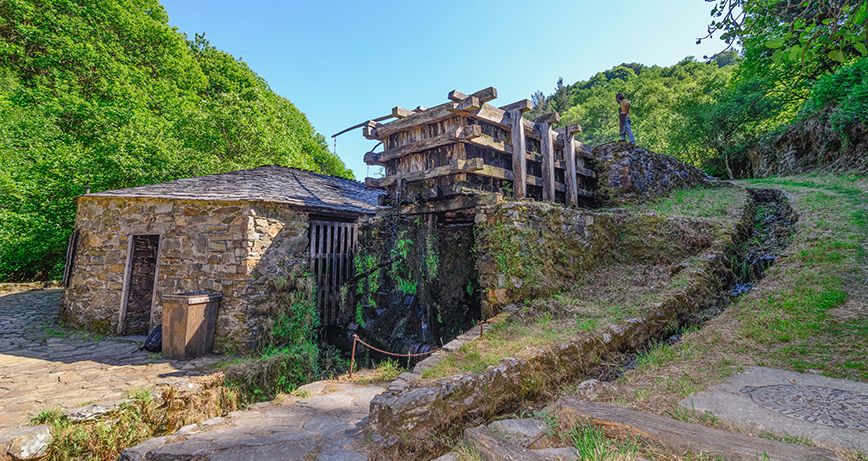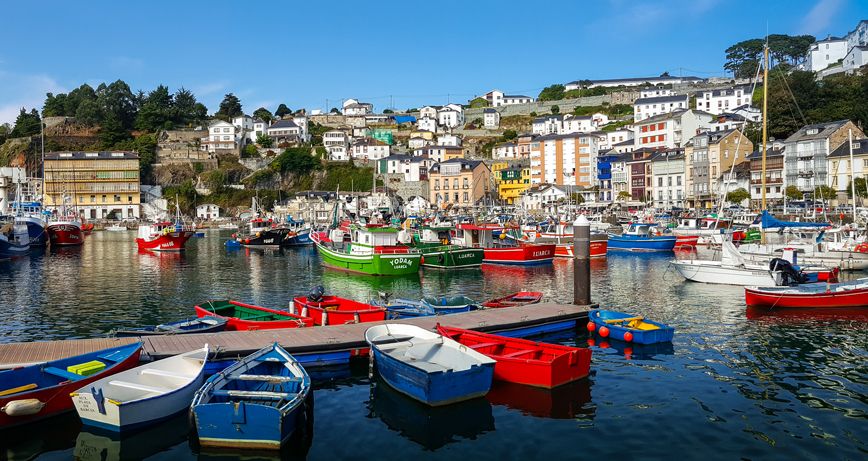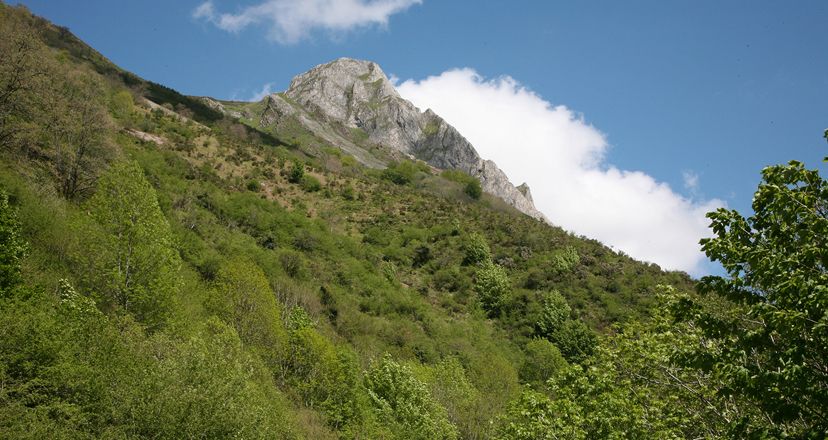Back Top 10 things to see and do in Cudillero
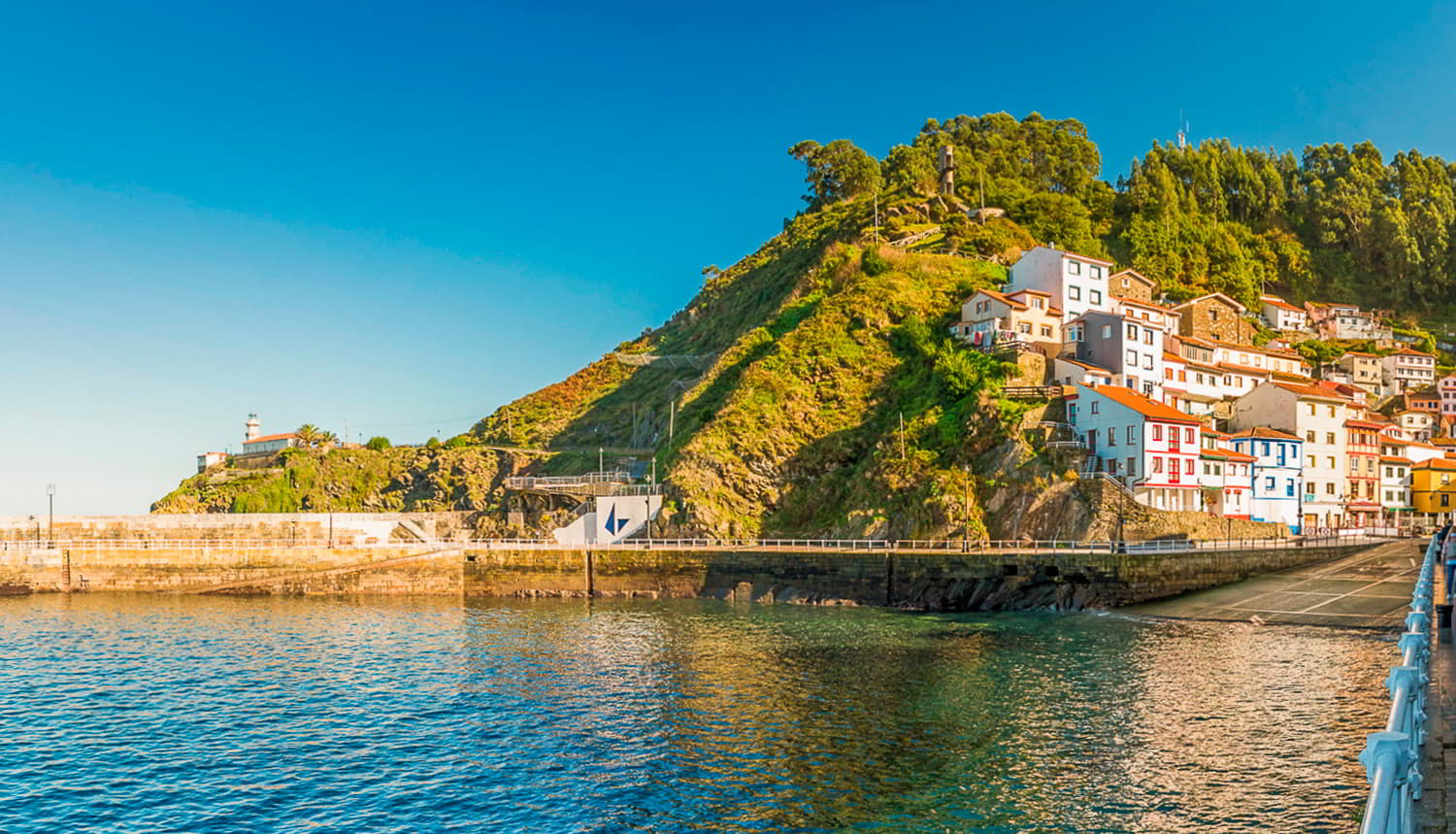
Top 10 things to see and do in Cudillero
The council of Cudillero, for its landscapes, its cultural heritage and its people, is a fascinating place in the west of Asturias. Here are 10 of the best things to see and do there!
The variety of its landscapes, the uniqueness of its people and its great cultural legacy make the council of Cudillero a fascinating place in western Asturias.
Cudillero is a faithful reflection of the orographic soul of Asturias, and in its almost one hundred square kilometres it draws dream geographies in the form of brañas and mountains, which eagerly descend towards the valleys and towards a rocky coast, with powerful cliffs, rough waves and calm, a refuge for the tastiest seafood and the most passionate and expert seafarers.
Lovely panoramic views, hermitages of deep-rooted devotion, Indian architecture, palaces with a Versaillesque air, the Jacobean route along the coast, fish and seafood that look you in the eye, the most colourful amphitheatre in the world, gastronomic traditions such as the curadillo, unique festivals such as L'Amuravela, lighthouses that look fearlessly out to sea such as the one in the town of Cudillero or Vidio, legends that will unleash your imagination, a seafaring atmosphere that unravels centuries-old stories? Everything in Cudillero will be enveloping and seductive, with that touch of magic and mystery that only places touched by the deities have.
A slow, gentle stroll through the council of Cudillero and the town of Cudillero will reveal some of the best things to see and do in this little piece of Asturias... Here are 10 suggestions!
Enjoy an invisible villa
Of all the fishing villages in the Cantabrian Sea, Cudillero is the only one that cannot be seen either from land or from the sea, as it is located in a natural bend that makes it invisible and therefore mysterious. This means that in order to see Cudillero you will have to be inside, and once there, the spectacle will be astonishing...

A fishing port full of flavour, a town that slopes almost vertically down a hillside between two hills, creating a unique amphitheatre of bright colours, a cosmopolitan atmosphere where you can hear several languages in just a few metres, terraces, restaurants and cider bars in any season of the year, the chapel of El Humilladero, the church of San Pedro... these are some of the signs of identity of a town called pixueta, which is so unique that it even has its own language.
Cudillero, furrowed in its entrails by two rivers, the Santantón and La mimosa, is like a kind of floating raft that goes out to sea, which is its true essence. Everything in Cudillero tastes of the sea, smells of the sea, sounds of the sea... Murals, nets, rudders, floats... all are unmistakable signs that you have arrived in a seafaring territory with a strong identity.
Stroll through the world's most colourful amphitheatre
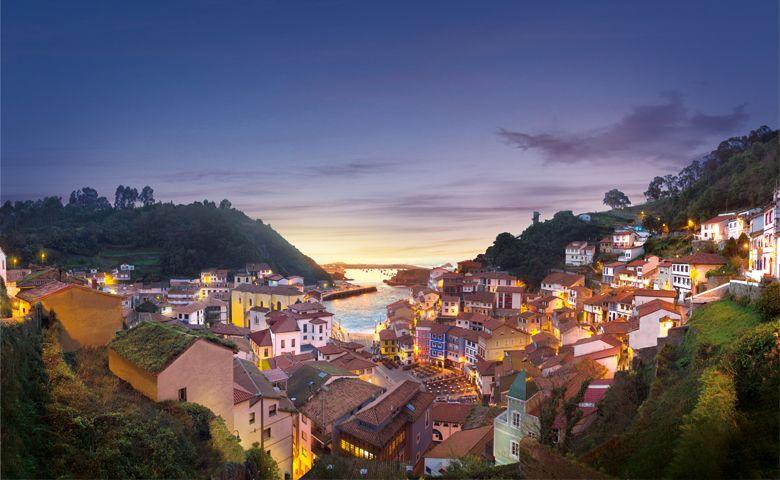
One of the supreme attractions offered by the town of Cudillero is the possibility of wandering through the streets, of literally getting lost in its many nooks and crannies. You will discover endless stairways, passageways, balconies, viewpoints, brightly coloured fishermen's houses... in whose arcades you may find some curadillo - small shrimps that dry or cure on the terraces, windows or balconies, to be eaten during the "envernada" or vigil season.
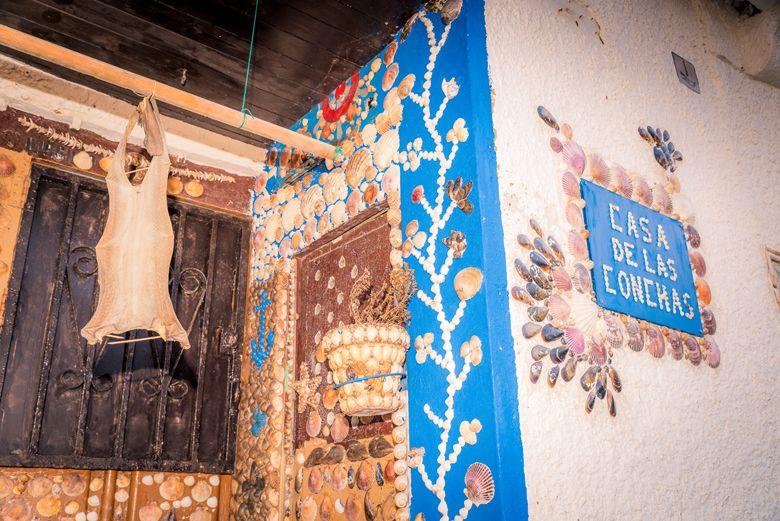
If you enter the amphitheatre and follow the blue fish painted on the ground, you will zigzag your way to the top, and as you gain height, you will have different views of Cudillero. As you ascend, the face of the village changes, as if it had a thousand faces, and you will get lost among its roofs, with the background music of the sea waves and the singing of the seagulls. Observing the amphitheatre from inside the amphitheatre is an incredible experience, it is like unravelling some of Cudillero's mysteries...
Walk from viewpoint to viewpoint to get more inspiration.
Once you are in the town of Cudillero, and you have visited its port, its streets, its architecture, its terraces, its shops, and you have discovered the charm of its atmosphere and its people, it is time to enjoy the views from its viewpoints, which surround and flood Cudillero, offering you the best panoramic views of this place that has just appeared before your eyes as if by magic.
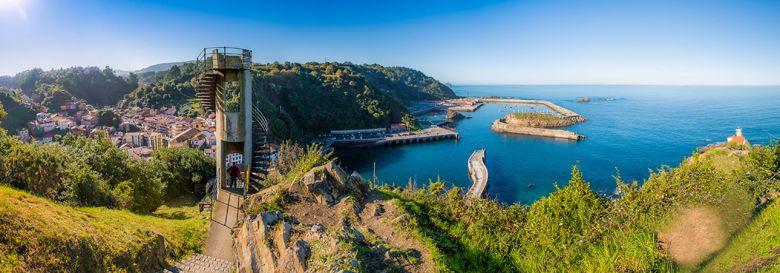
There are three places not to be missed. One of them is the La Garita viewpoint, located on the east side of the amphitheatre, from where you can see the lighthouse, the port and the town at a glance. Another is the viewpoint of "El Picu", right in the heart of Cudillero, and another is the Casa del Fuego, in the western part of Cudillero. Between all of them you will complete a sequence of unique visual snapshots, at the same time that you will delve into the curious history of this town.
And so, walking from viewpoint to viewpoint, you will be better inspired to understand the soul of Cudillero...
Delight yourself with cookers that offer you the best of the sea and the land.
After strolling through the streets, there is no greater pleasure than sitting down to savour the exceptional gastronomy of Cudillero. All over the council, and of course in the town, the cookers are burning at all hours of the day and night, masterfully combining tradition and creativity, and offering you the best fruits of the sea and the land, as it could not be otherwise.
In the town, the fishmongers are a spectacle in themselves, not only for the quality and freshness of the product, but also for the way it is presented, and obviously they delight the tourists, who are spellbound by the barnacles or contemplating the power and vitality of bugres, spider crabs, edible crabs or andaricas, before they are finally on the plate.
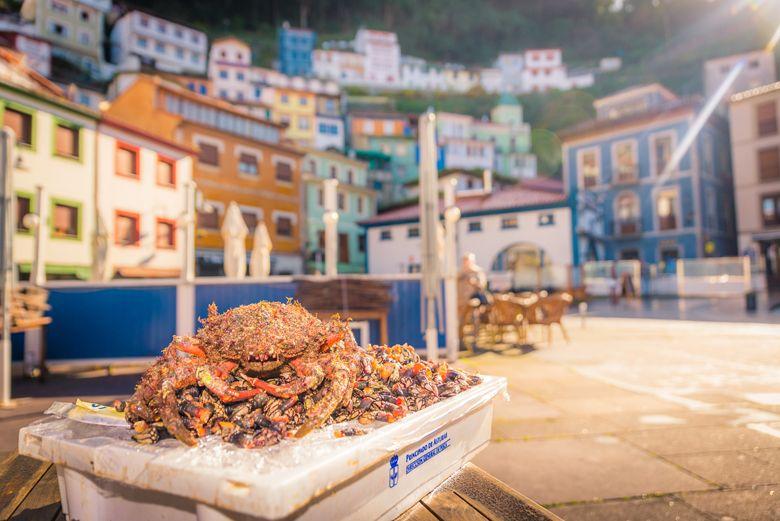
The restaurants and cider houses in Cudillero are also a spectacle, both on their terraces and inside. Both in the town and in other villages in the council, the aromas of the sea waft in the air and on the tables, where the dishes are presented in a natural and attractive way, and everything is delicious, including the desserts, some as typical as cottage cheese or natas vaqueiras (custard).

A walk to the mysterious hermitage of Santa Ana de Montarés
And after tasting the exquisite delicacies, what better than a simple and pleasant route to the hermitage of Santa Ana de Montarés, which is just 5 kilometres from the town of Cudillero, and is located in the parish of San Juan de Piñera.
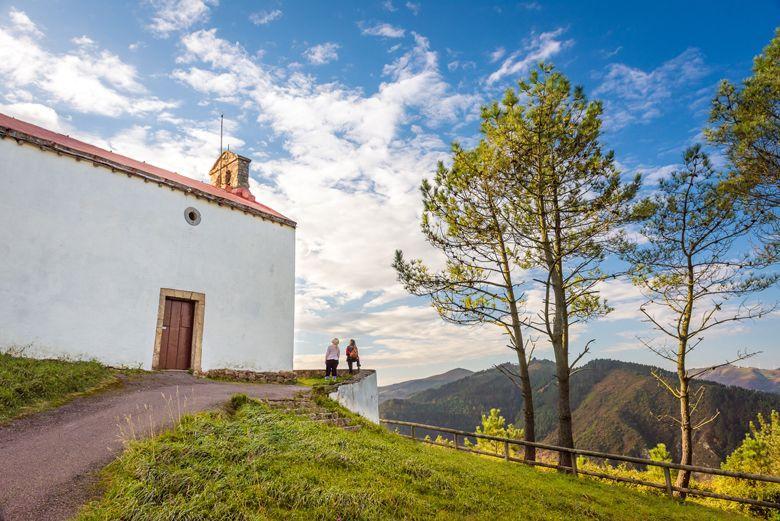
There are many roads that lead to Santa Ana and all very close to the Jacobean route along the coast, and tradition has it that this place is linked to the origin of the Camino de Santiago and that since the tenth century pilgrims made a stop here.
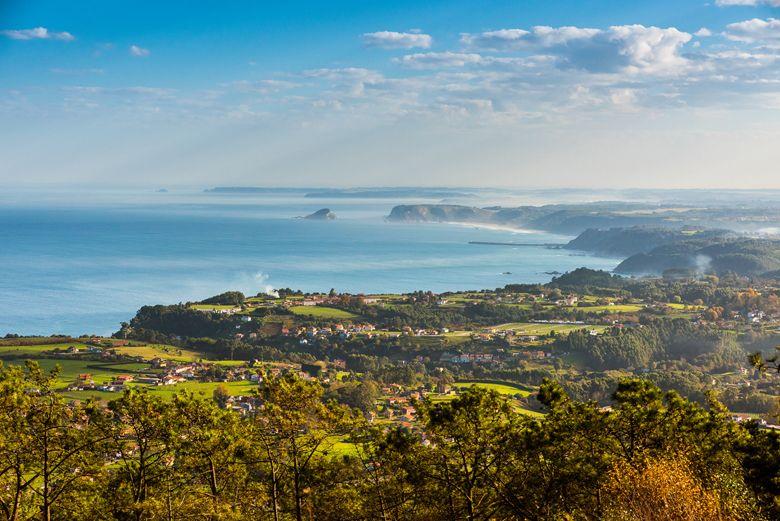
The truth is that the hermitage, perched on the top of a hill and dominating the whole coast and the different brañas and valleys of Cudilleres - such as Las Luiñas, which can be seen perfectly, or Faedo -, looks like a watchtower that has been watching over the lives and properties of all the souls that come here for centuries... From this incredible vantage point, you can almost touch the valley of Las Luiñas, and therefore the Way of St. James, declared a World Heritage Site.
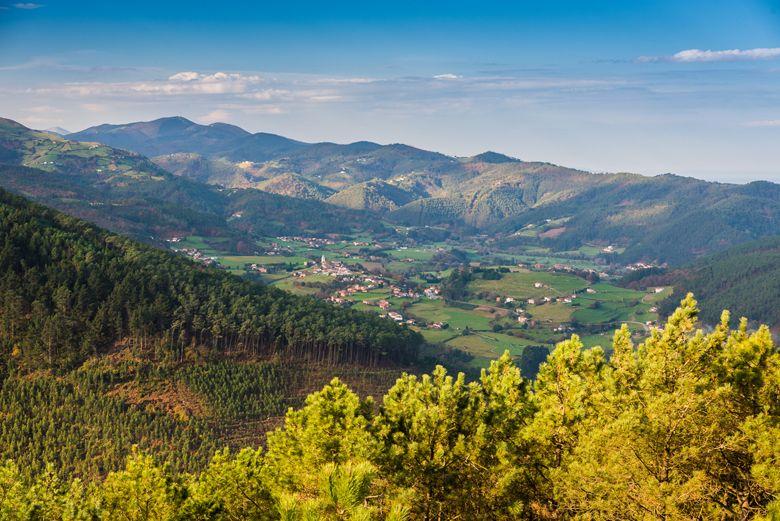
Inside, Santa Ana envelops you with her mysteries... The votive offerings hang on the walls, some of them very typical of the culture of the coast, such as the "lepantos" (sailor's caps) that you will see next to the altar. Also particularly striking are the chains with which the devotees rub or "rustrianise" their bodies asking for intimate desires, as Santa Ana is believed to have miraculous powers... In addition, annexed to the worship area is an old kitchen, which was once used by pilgrims, who even arrived on horseback, and proof of this is that the church has a space that serves as stables.
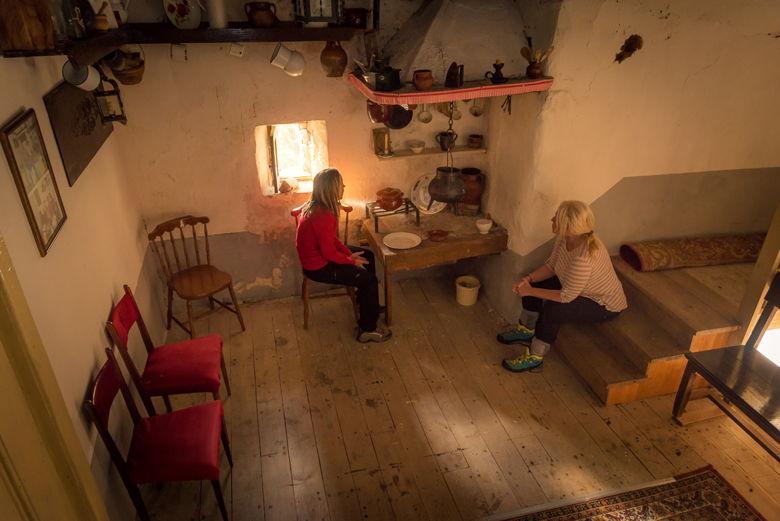
Be that as it may, Santa Ana invades you with peace and quiet, mountains and sea, sun and breeze...
A stop at El Pito, the perfect prelude to the Pixueto amphitheatre.
Before your eyes are amazed by Cudillero, you will find a place where you will feel that time has stopped, and where you will stop too. El Pito, barely two kilometres from the village of Cudillero, is the perfect antechamber to the amphitheatre. So close and yet so different from the amphitheatre. El Pito is a sunny village nestled on a rasa, which is striking for its Indian houses, but especially for the grandiose ensemble made up of the church, the schools and the Selgas Palace.
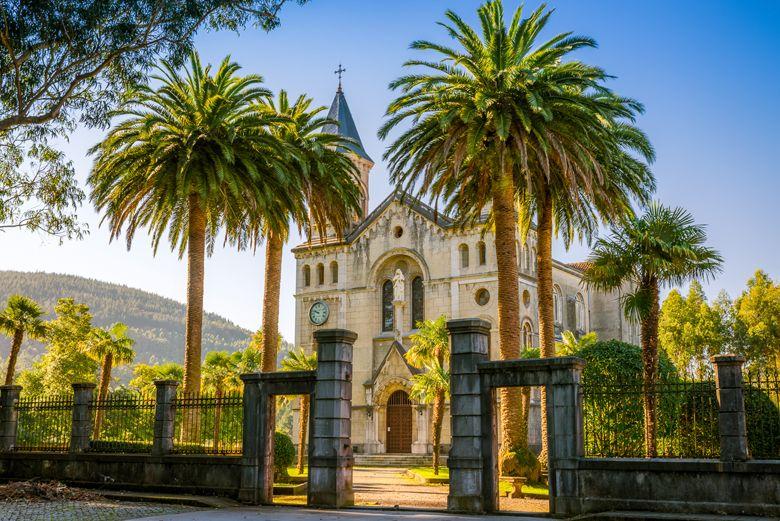
Known as the Asturian Versailles, due to its landscape and architectural conception, and the valuable works of art it contains, the Selgas Palace - the most important possession-museum of the council - has a curious family history that goes back to the 19th century and the three Selgas siblings (Fortunato, Ezequiel and Francisca), benefactors of the council, who also built the schools (now a secondary school), and the church of Jesús Nazareno, where the altar of King Silo is conserved, considered the oldest in Spain.
A stroll through El Pito will undoubtedly be enlightening and rewarding.
Discover the secrets of Cape Vidio
At some point in your journey through Cudillero, you will set a course for Cabo Vidio, as if you were a sailor looking for the luminous signal of a magical lighthouse that will guide you to a dream destination.
This is precisely the sensation you will have at Cabo Vidio: having arrived at a unique place, full of secrets that are waiting to whisper hundreds of prodigious stories in your ear.
Oviñana, the parish where this cape is located, is a delightful area, with lots of atmosphere, very friendly people and great places to have lunch, dinner or a vermouth. And if what you like is to go on a route - on foot or by bike - along the coast, a visit to Cape Vidio and its surroundings will leave you totally seduced.
There is something special about Cape Vidio. Perhaps it has to do with this different atmosphere that it is a geographically strategic point (it is the second most northerly point of Asturias) from which you can see, if the atmosphere is clear, Cabu Peñes to the east and even Estaca de Bares to the west. It is also the site of the last lighthouse to be built in Asturias and one of the most recent lighthouses built in Spain, in the middle of the 20th century.
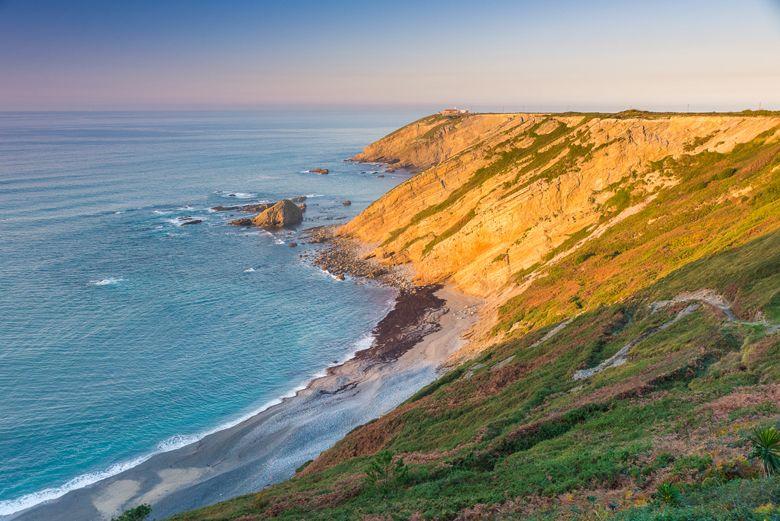
The Vidio cliff is spectacular, made of quartzite and slate juxtaposed and aligned as if it were an immense rock sculpture, to the point that just below the lighthouse, there is a large natural cavity, topped by a rounded dome that reaches sixty metres in height, and for this reason it is known as "la iglesiona".
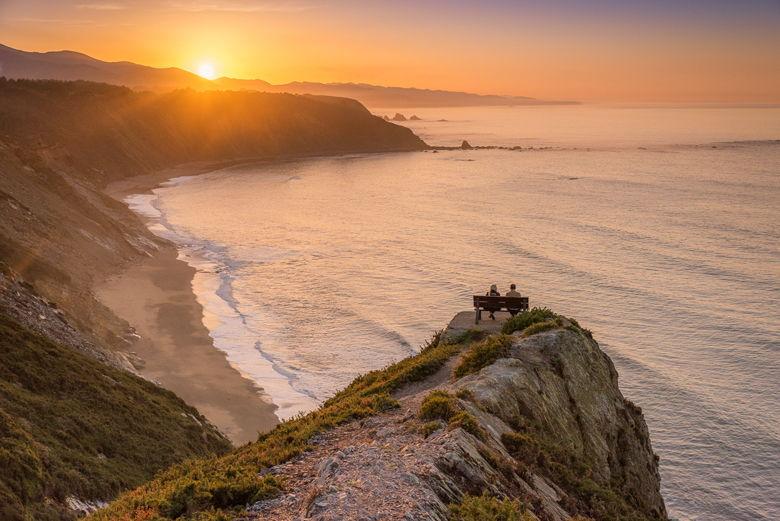
And as if all this were not enough, in the surroundings of Cabo Vidio, in a westerly direction and perfectly located on the coastline, with views that will make you fall silent, you have a series of benches - so that you can do the whole route - where you can contemplate the whole coastline, with its beaches and cliffs, in the most peaceful and quiet way, and if you turn your eyes around you will see the "brañas" that descend to surf the waves that have been splashing the eternally suggestive Cabo Vidio for millions of years...
Fall in love with the infinite charm of a different kind of beach.
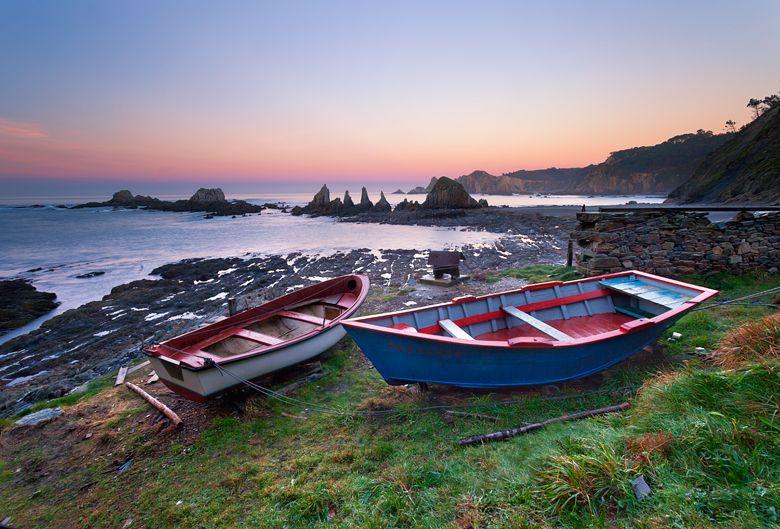
The beaches of Cudillero are epic. Each one is different from the next, and in all of them you will discover unimaginable corners. Untamed and wild, peaceful or impetuous, and always different. Large and hidden. With or without rivers. With natural pools at low tide. Some even - like La Vallina - with a mill by the sea...
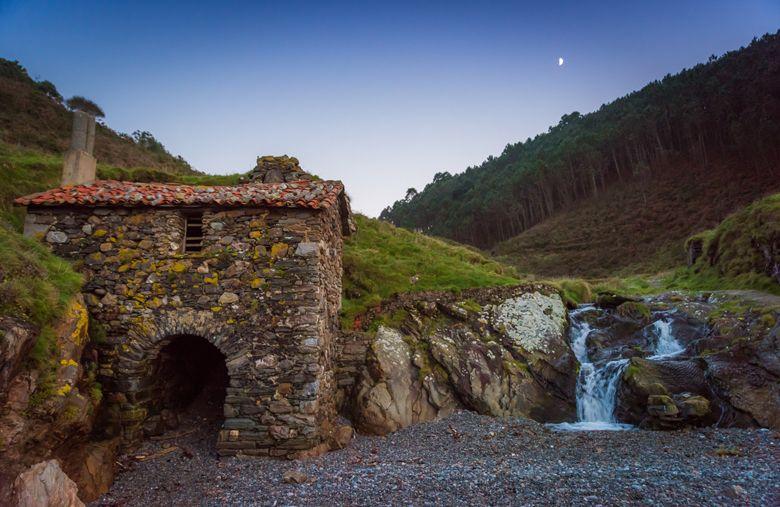
Silencio beach, Concha de Artedo, Gueirúa, Oleiros, San Pedro de la Ribera or Puerto Chico are some of the beaches that make up the list of the coastal beauty of Cudillero.
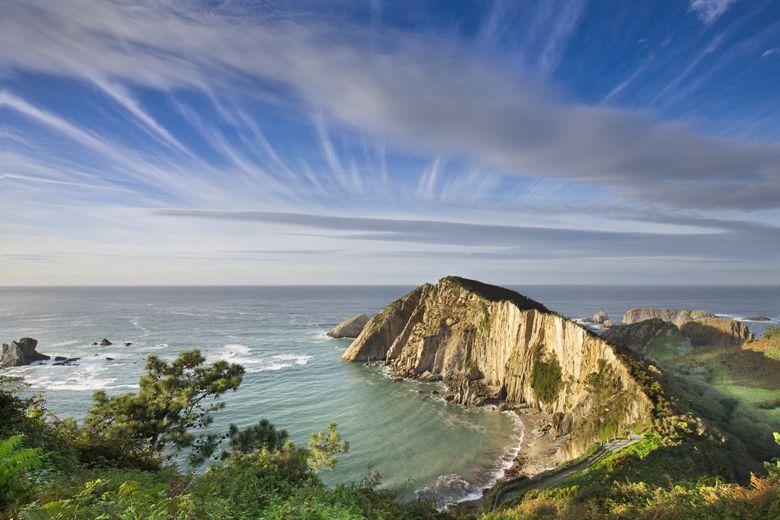
Let yourself be carried away by the magic of the brañas that look out to sea
Few panoramic views are more eloquent and beautiful than the ones you will have from a "braña vaqueira" in Cudillero, where the cattle graze in the open air, and the Cantabrian Sea can be seen in the near distance.
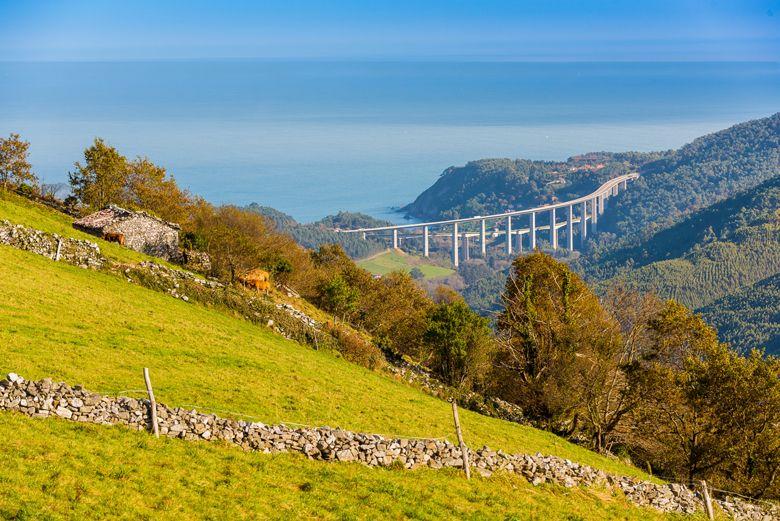
The green of the "brañas", with their huts, and the blue of the sea in the background, will make you feel that the "vaqueiros de alzada" - the transhumant and cattle-raising people who lived in the west and centre of Asturias - were privileged to have the pastures for their cattle in this beautiful mountainous area of Cudillero.
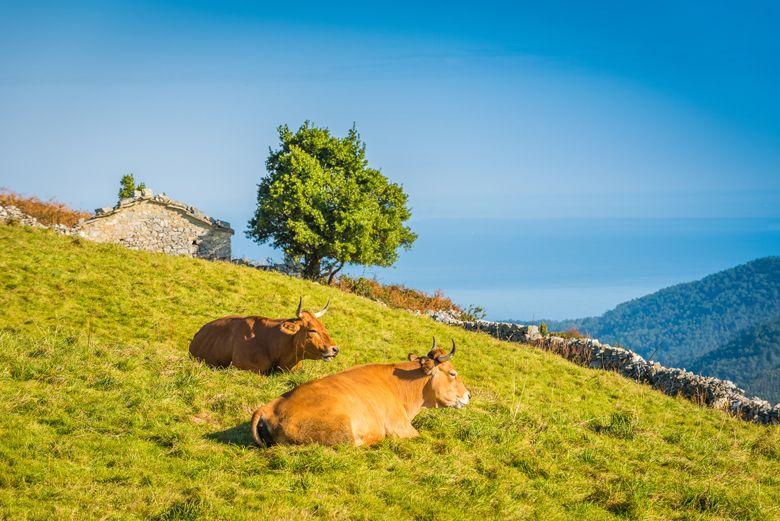
Brañaseca is a magnificent example of what these "brañas vaqueiras" were and are.
On your way down to the coast, you can visit the valley of Luiñas - spectacular and a place of pilgrimage, as the Way of St. James passes through Soto de Luiña -, or the village of Prámaro, very picturesque with its granaries, its bridge over the river Esqueiro, or its fluvial path that reaches Soto de Luiña.
Climb up to Pico San Roque
On a quiet stroll around Cudillero, Pico San Roque will be one of your favourite spots. You'll find a green esplanade, surrounded by trees and mountains, where the small chapel dedicated to San Roque and a hórreo (raised granary) in the surrounding area overlook the Asturian coast.
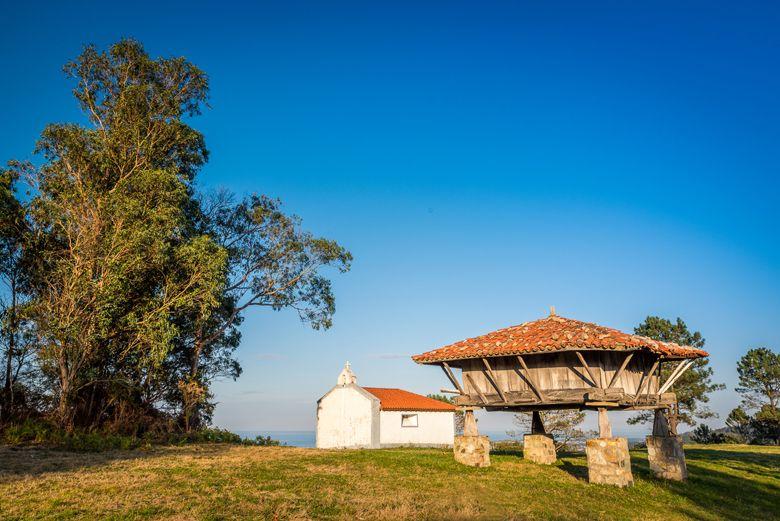
In addition, every August, a lively festival is held there in honour of this saint. Of course, before going up to the peak, you must stop in the village of Ballota, to enjoy the architecture and colour of its Indian houses.
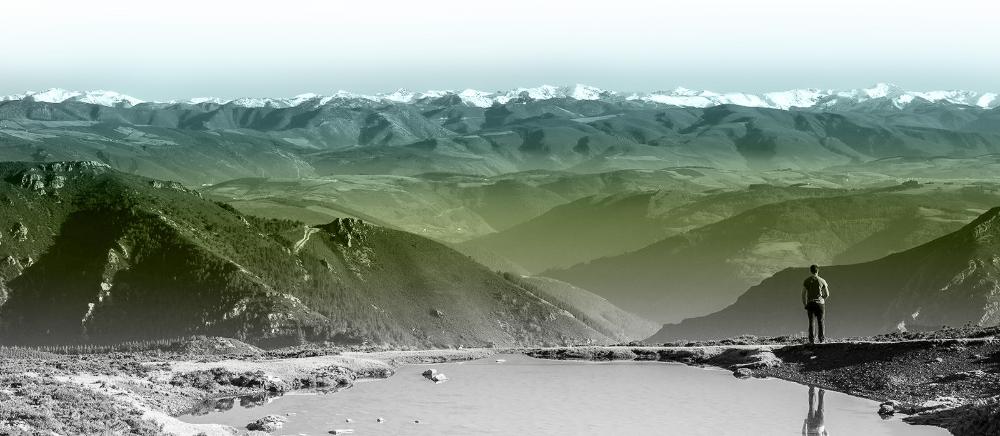
Subscribe to our newsletter and take advantage of offers, discounts, and news
Subscribe

